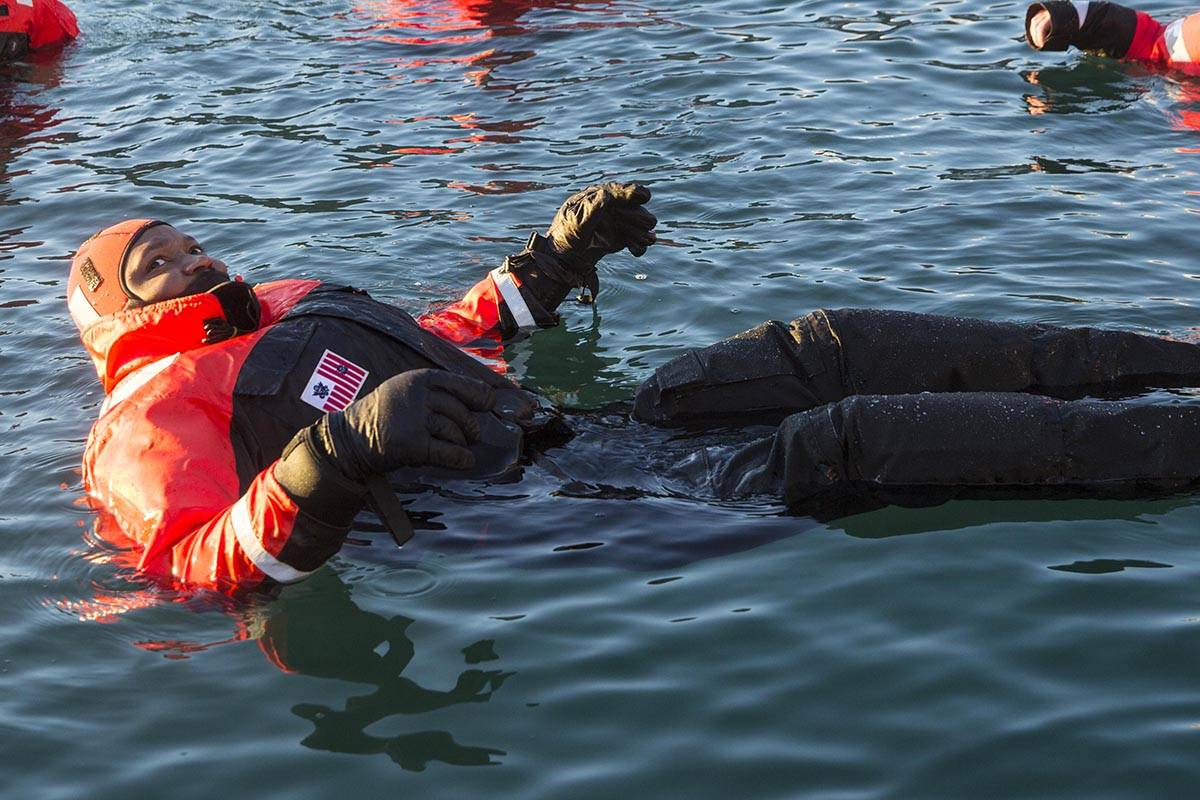How would you like to start your Monday morning by spending a quarter hour floating in the harbor mid-winter?
Some aren’t as opposed as you might think.
“I almost wish I could start every day with it, besides the getting in and out,” said Cmdr. Byron Hayes, head of Coast Guard District 17’s Response Department.
Ten Coast Guardsmen jumped into 32-degree waters in survival suits, fulfilling both an annual requirement to be up to speed on flotation technique and the need to check the integrity of the suits themselves. The air temperature at the pier was roughly 18 degrees, not factoring for wind chill, according the National Weather Service.
“The purpose is to move around and make sure nothing is leaking,” said Petty Officer 2nd Class William Peters, a boatswain’s mate from Station Juneau helping to run the exercise. “The suits should last several years with proper maintenance.”
The most problematic part of the suits is the neck and wrist seals. Their direct contact with both the skin and the water leads to accelerated degradation of the material, Williams said. Swimmers wore two additional layers underneath the survival suits to maintain heat and see if there were any leaks in the material of the suit. Williams said that suits with small holes could be patched to extend the useful life of the suits.
The suits are used by Coast Guardsmen on the water every time the temperature goes below 50 degrees, Williams said. In warmer temperatures, what’s called a mustang suit might be used, which is less cumbersome. Above a certain temperature, only a life jacket is required.
“You can be in the water for a few hours with the survival suit,” Williams said.
Without a survival suit, Williams said, the Coast Guard has what they call the 1-10-1 rule for Alaska waters: someone has one minute to get their breathing under control before hyperventilation and shock start seriously affecting their odds of survival, 10 minutes of meaningful movement with your hands or arms, and one hour before they lose consciousness. Those numbers may differ based on size, weight and body type, but as a rule of thumb for survival, they’re pretty accurate.
“We tried to do it before but the dead of winter seems like the best time,” said Petty Officer 2nd Class Steven Knight, after getting out of the water. “You’re gonna know if it works.”
• Contact reporter Michael S. Lockett at 757-621-1197 or mlockett@juneauempire.com.

